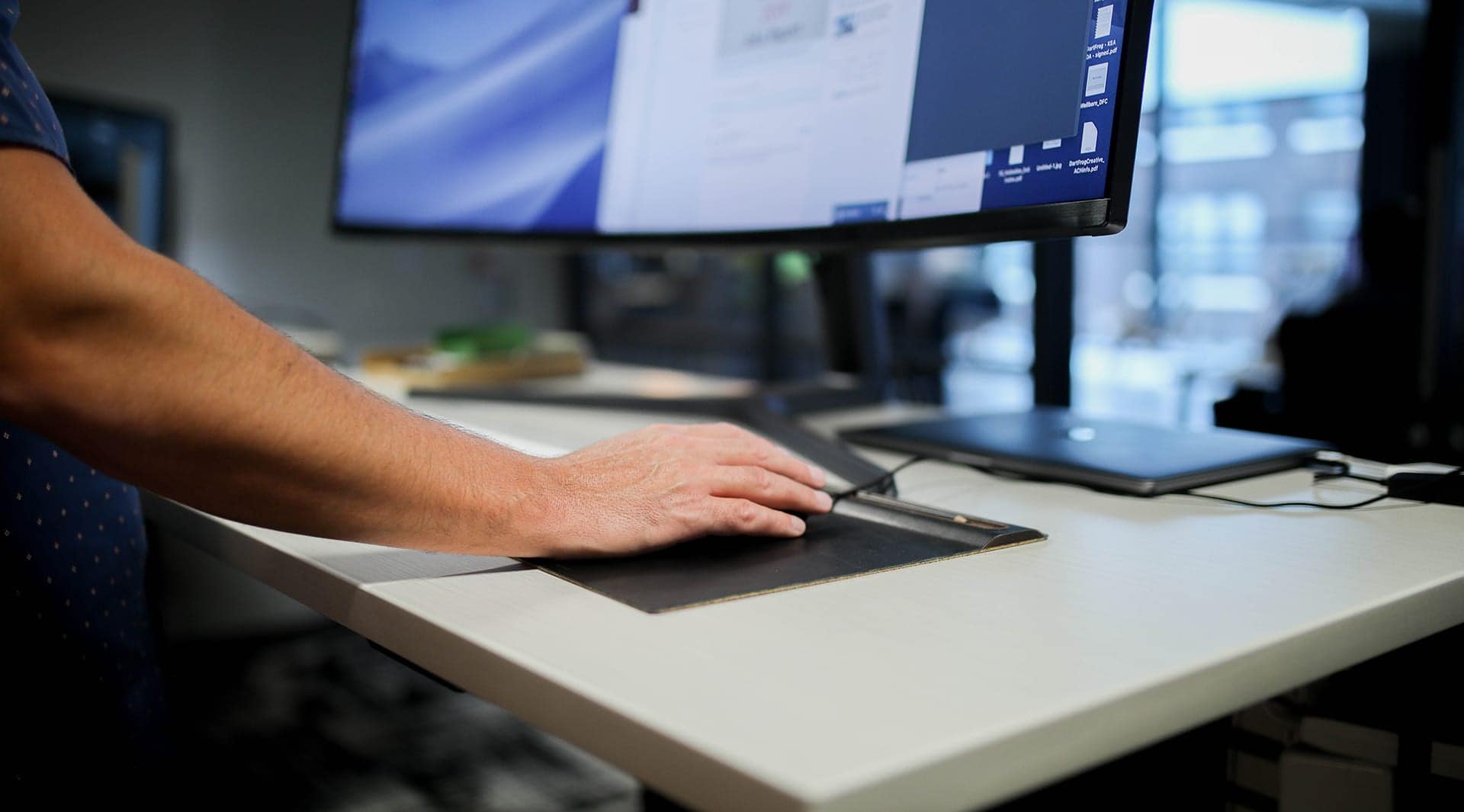Is Standing Better Than Sitting at Work?
With all the buzz about the danger of sedentary habits and the benefits of standing desks, it may start to seem like standing all day at work is the perfect healthy solution. Of course, the answer is not that simple, but it is possible to find a healthier balance in standing vs sitting.
Any fast-food cashier standing behind a counter could attest that being on your feet for many consecutive hours a day has a negative impact on your physical and mental health – in a number of ways. Studies have shown that intervals of standing for short periods are beneficial to both your health and workplace productivity.
Standing vs Sitting: Which Is Better?
The best way to get office work done – while prioritizing your physical and mental health – is to find the right mix of sitting and standing for you. The sweet spot varies from person to person, but for most people who sit at a desk, the right balance means increasing how often you stand, and for how long.
What Happens to Your Body When You Sit All Day?
For the past several decades, people have reported drastically increasing amounts of sedentary time. In fact, sedentary jobs have increased 83% since 1950. As we deal with some of the fallout from this shift to more sedentary work, researchers have honed in on some of the problems that workers experience that are associated with sitting all day at work.
Even with a luxury office chair, exclusively sitting all day has been shown to be bad for your health in a variety of ways, and damaging to your workplace performance as well.
The following are a just few examples of what happens to your body when you sit all day:
- Poor sitting posture, often hunched over a desk or slouching from poorly engaged core muscles, which contributes to eventual spine issues
- Greater odds of feeling sluggish/tired
- Increased chance of weight gain
- Increased risk for developing depression
- Generally increased risk of death from any cause
Are Standing Desks Good for You?
One of the best ways to combat the risks of sitting all day is to invest in a standing desk. Standing desks can be the game-changer that can not only improve your work habits, but give you a better quality of life overall. So, are standing desks good for you? They certainly can be, if you use them to your advantage.
Standing Desk Health Benefits
Some of the benefits of standing desks include:
- Less muscle strain, which results in lower levels of stress and anxiety
- Increased productivity due to increased awareness
- Increased energy levels
- Lower chance of type 2 diabetes
- Slightly more calories burned with minimal effort (as more muscles are activated, in comparison to sitting)
- Decreased risk of heart disease
- Increases in life expectancy
- Better posture and stronger core muscles, resulting in less back pain
To maximize back pain relief, make sure to keep your body in alignment, with your shoulders relaxed and knees slightly bent.
How Often Should You Stand Up from Your Desk?
To become less sedentary, it’s ideal to take at least a 1-minute break from sitting every half hour or so, whether that is a walk to the water cooler or an interval of standing desk work. Another best practice is to work towards spending at least 15 minutes standing for every hour sitting.
The exact right ratio of standing vs sitting is person-dependent. Some people even prefer to work for multiple hours standing up. When you are building up the amount of time you spend standing at your desk, you may find that you can stand longer if you keep your weight on the balls of your feet, with knees slightly bent to relieve any pressure on your hips and knees.
Standing All Day at Work: When to Stop
If standing is so good for you, how do you know when to stop? Most people ask themselves this question, in one way or another, as they increase their time standing at a height adjustable workstation.
As with all good things, it’s possible to stand too long. The best way you know it’s been too long is whenever you feel that standing is making your current task more difficult. In other words, if you are feeling restless, having difficulty concentrating, or experiencing muscle strain, you’ve probably been standing too long. A quick position change is probably in order.
If you’ve never used a standing desk before, it takes time to get comfortable with how often and how long you are standing. By starting with just 5 minutes at a time, you can begin to find a balance that works best for you. Whenever standing becomes distracting or uncomfortable, take a break to move, stretch, and refocus your eyes.
Health Risks from Standing Too Long
Is standing better than sitting at work? Not necessarily. As anyone who stands in place all day can tell you, there are adverse health risks people can experience when they are standing all day at work – especially when standing all day, every day. Some of the main risks of standing all day include:
- Cardiovascular issues like carotid arteriosclerosis, leg edema, light headedness or dizziness, heart rate issues, high blood pressure, and venous diseases
- Lower limb muscle fatigue
- Increased risk of blood clots in your legs
- Lower back and leg pain
- Pregnancy related health outcomes like low birth weight and preterm deliveries
Because of these health risks from standing too long, the best type of standing desk is a height adjustable standing desk that doesn’t require standing all day at work. The ability to easily sit and stand whenever you feel the urge is key because it allows you to reap the advantages of both positions.
Experience The Standing Desk Difference
Whether you work from home or head to the office every day, a Standing Desk can greatly improve how you work. With our risk free 30-day trial, see for yourself the difference a standing desk makes in the quality of your work day.









